
Aesthetics, or esthetics, is a branch of philosophy that deals with the nature of beauty and taste, as well as the philosophy of art. It examines aesthetic values, often expressed through judgments of taste.

Kitagawa Utamaro was a Japanese artist. He is one of the most highly regarded designers of ukiyo-e woodblock prints and paintings, and is best known for his bijin ōkubi-e "large-headed pictures of beautiful women" of the 1790s. He also produced nature studies, particularly illustrated books of insects.
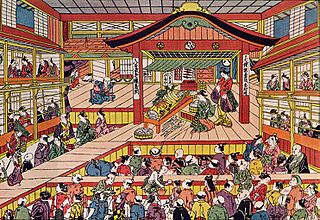
Ukiyo-e is a genre of Japanese art which flourished from the 17th through 19th centuries. Its artists produced woodblock prints and paintings of such subjects as female beauties; kabuki actors and sumo wrestlers; scenes from history and folk tales; travel scenes and landscapes; flora and fauna; and erotica. The term ukiyo-e translates as "picture[s] of the floating world".
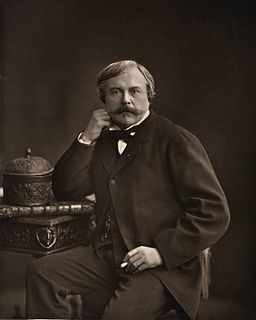
Edmond Louis Antoine Huot de Goncourt was a French writer, literary critic, art critic, book publisher and the founder of the Académie Goncourt.

Les Nabis were a group of young French artists active in Paris from 1888 until 1900, who played a large part in the transition from impressionism and academic art to abstract art, symbolism and the other early movements of modernism. The members included Pierre Bonnard, Maurice Denis, Paul Ranson, Édouard Vuillard, Ker-Xavier Roussel, Félix Vallotton, Paul Sérusier and Auguste Cazalis. Most were students at the Académie Julian in Paris in the late 1880s. The artists shared a common admiration for Paul Gauguin and Paul Cézanne and a determination to renew the art of painting, but varied greatly in their individual styles. They believed that a work of art was not a depiction of nature, but a synthesis of metaphors and symbols created by the artist. In 1900, the artists held their final exhibition and went their separate ways.

Samuel Siegfried Bing, who usually gave his name as S. Bing, was a German-French art dealer who lived in Paris as an adult, and who helped introduce Japanese art and artworks to the West and was a factor in the development of the Art Nouveau style during the late nineteenth century.

Japonisme is a French term that refers to the popularity and influence of Japanese art and design among a number of Western European artists in the nineteenth century following the forced reopening of foreign trade with Japan in 1858. Japonisme was first described by French art critic and collector Philippe Burty in 1872.
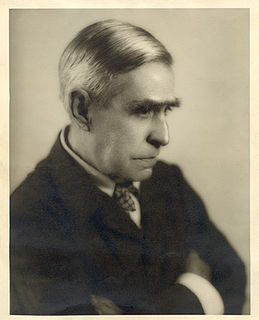
José Juan de Aguilar Acuña Tablada was a Mexican poet, art critic and, for a brief period, diplomat. A pioneer of oriental studies, and champion of Mexican art, he spent a good portion of his life living abroad. As a poet, his work spans from the fin-de-siècle style to avant-garde experimentalism. He was an influential early writer of Spanish-language haiku.

The history of relations between France and Japan goes back to the early 17th century, when a Japanese samurai and ambassador on his way to Rome landed for a few days in Saint-Tropez and created a sensation. France and Japan have enjoyed a very robust and progressive relationship spanning centuries through various contacts in each other's countries by senior representatives, strategic efforts, and cultural exchanges.
This is an alphabetical index of articles about aesthetics.

Fine-art photography is photography created in line with the vision of the photographer as artist, using photography as a medium for creative expression. The goal of fine-art photography is to express an idea, a message, or an emotion. This stands in contrast to representational photography, such as photojournalism, which provides a documentary visual account of specific subjects and events, literally representing objective reality rather than the subjective intent of the photographer; and commercial photography, the primary focus of which is to advertise products, or services.

"The Work of Art in the Age of Mechanical Reproduction" (1935), by Walter Benjamin, is an essay of cultural criticism which proposes and explains that mechanical reproduction devalues the aura (uniqueness) of an objet d'art. That in the age of mechanical reproduction and the absence of traditional and ritualistic value, the production of art would be inherently based upon the praxis of politics. Written during the Nazi régime (1933–1945) in Germany, Benjamin's essay presents a theory of art that is "useful for the formulation of revolutionary demands in the politics of art" in a mass-culture society.
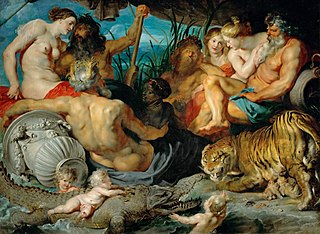
A work of art, artwork, art piece, piece of art or art object is an artistic creation of aesthetic value. Except for "work of art", which may be used of any work regarded as art in its widest sense, including works from literature and music, these terms apply principally to tangible, physical forms of visual art:

Sakai Hōitsu was a Japanese painter of the Rinpa school. He is known for having revived the style and popularity of Ogata Kōrin, and for having created a number of reproductions of Kōrin's work.

Tadamasa Hayashi was a Japanese art dealer who introduced traditional Japanese art such as ukiyo-e to Europe.
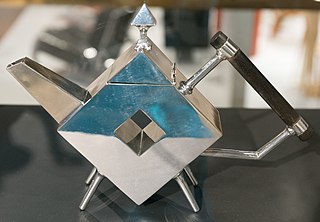
The Anglo-Japanese style developed in the United Kingdom through the Victorian period and early Edwardian period from approximately 1851 to the 1910s, when a new appreciation for Japanese design and culture influenced how designers and craftspeople made British art, especially the decorative arts and architecture of England, covering a vast array of art objects including ceramics, furniture and interior design. Important centres for design included London and Glasgow.
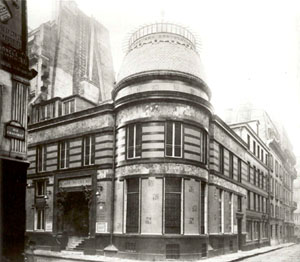
The Maison de l'Art Nouveau, abbreviated often as L'Art Nouveau, and known also as Maison Bing for the owner, was a gallery opened on 26 December 1895, by Siegfried Bing at 22 rue de Provence, Paris.

Authenticity in art is manifest in the different ways that a work of art, or an artistic performance, can be considered authentic. The initial distinction is between nominal authenticity and expressive authenticity. In the first sense, nominal authenticity is the correct identification of the author of a work of art; of how closely an actor or an actress interprets a role in a stageplay as written by the playwright; of how well a musician’s performance of an artistic composition corresponds to the composer’s intention; and how closely an objet d’art conforms to the artistic traditions of its genre. In the second sense, expressive authenticity is how much the work of art possesses inherent authority of and about its subject, and how much of the artist’s intent is in the work of art.

Gabriel Paul WeisbergOAL is an American art historian and educator. Weisberg is Professor of Art History Emeritus at the University of Minnesota.

Philippe Burty was a French art critic. He contributed to the popularization of Japonism and the etching revival, supported the Impressionists, and published the letters of Eugène Delacroix.




















